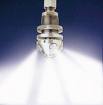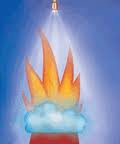|
|
 |
|
| Water Mist Fire Suppression Systems |
| |
| Water mist technology is the most dynamic
area of fire protection growth in recent years. New
system designs and concepts have been tested and listed,
standards written and international debate on applications
has taken place. The reason for this concentrated focus
has been the expectation that water mist will deliver
a safe, environmentally friendly fire protection solution.
The currently heralded applications for water mist
as a replacement for halons and marine fire protection
have been surpassed, with new applications being introduced
even in the domestic, residential, industrial and
commercial environments. The industry excitement is
based on the impressive performance of mist systems
in their rapid control and suppression of a fire as
opposed to traditional fire test standards. |
 |
| |
| Water mist system, with its small water droplets (typically
70-100 microns), is very efficient in absorbing a tremendous
amount of heat as the droplets are converted to steam.
This conversion to a vapour causes an expansion of over
1,600 times its original volume, thereby displacing
oxygen and disrupting the combustion process. The small
droplets affect heat transfer and tend to wet and cool
combustibles much like a typical sprinkler system. The
ability of small droplets to absorb heat and create
steam at the fire source is key to the effectiveness
of fine mist systems in controlling and extinguishing
fires. This process makes water mist systems more effective
than a typical automatic sprinkler system.In addition
the Water Mist System has a reactive surface area of
water will be in the range of 2,000/6000m²/litre
compared to 2m²/litre for conventional sprinkler
systems. Thus being a far more sustainable and effective
use of water. |
 |
| |
| The currently commercialised mist systems
fall into several types, drop size and operation pressure.
While certain systems types may perform more efficiently
for some risks the general use of a single mist system
across all types of risks has not previously been available.
Until now the selection of a mist system for a specific
risk has been necessary and conditions of listing vital
in the design of the system |
| |
| Water
Mist Vs Sprinklers |
| |
| |
| |
|
|
|
| |
|
|
|
|



